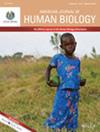In Search of Environmental Factors Associated With Global Differences in Birth Weight and BMI
Abstract
Objective
The “fetal origin of adult diseases hypothesis” encompasses the notion that intrauterine growth restriction (IUGR) alters fetal development trajectories. Various neonatal metrics inform IUGR, but not all contributors to IUGR have an impact on development trajectories. Chronic IUGR (twins) and slowly varying IUGR (seasonal) have little to no effect on later life trajectories. Perhaps development trajectories may evolve through other mechanisms, as for example, multiple short-lived periods of IUGR and repeated stimulation of metabolic pathways.
Methods
Daily temperature variation could deliver a frequent IUGR as pregnant women would experience some degree of placental vasoconstriction during maximum/midday temperatures. We assessed the association with daily temperature amplitudes for globally distributed records of crude fetal growth rates (CFGR) and BMI. Paired birthweight (BW) and gestational age (GA) data permitted analyses of CFGR in 70 countries and subsequent analysis of CFGR for association with daily temperature amplitude, seasonal temperature amplitude, mean annual temperature, calorie intake per day per−1 person−1, BMI, height, and socioeconomic conditions. Analog analyses were performed for gestational age, calorie intake, BMI, and height.
Results
CFGR and BMI showed a clear association with daily temperature amplitudes, which was not the case for gestational age, calorie intake, and height.
Conclusion
We show that daily temperature amplitudes are associated with both CFGR and BMI. These results permit a wider ecological appreciation of the hypothesis because daily temperature amplitudes inform environmental aridity and food scarcity. We discuss how scarcity, affluence, and the epidemiological environment influence the prevalence of afflictions associated with the fetal origin of adult disease hypothesis.


 求助内容:
求助内容: 应助结果提醒方式:
应助结果提醒方式:


